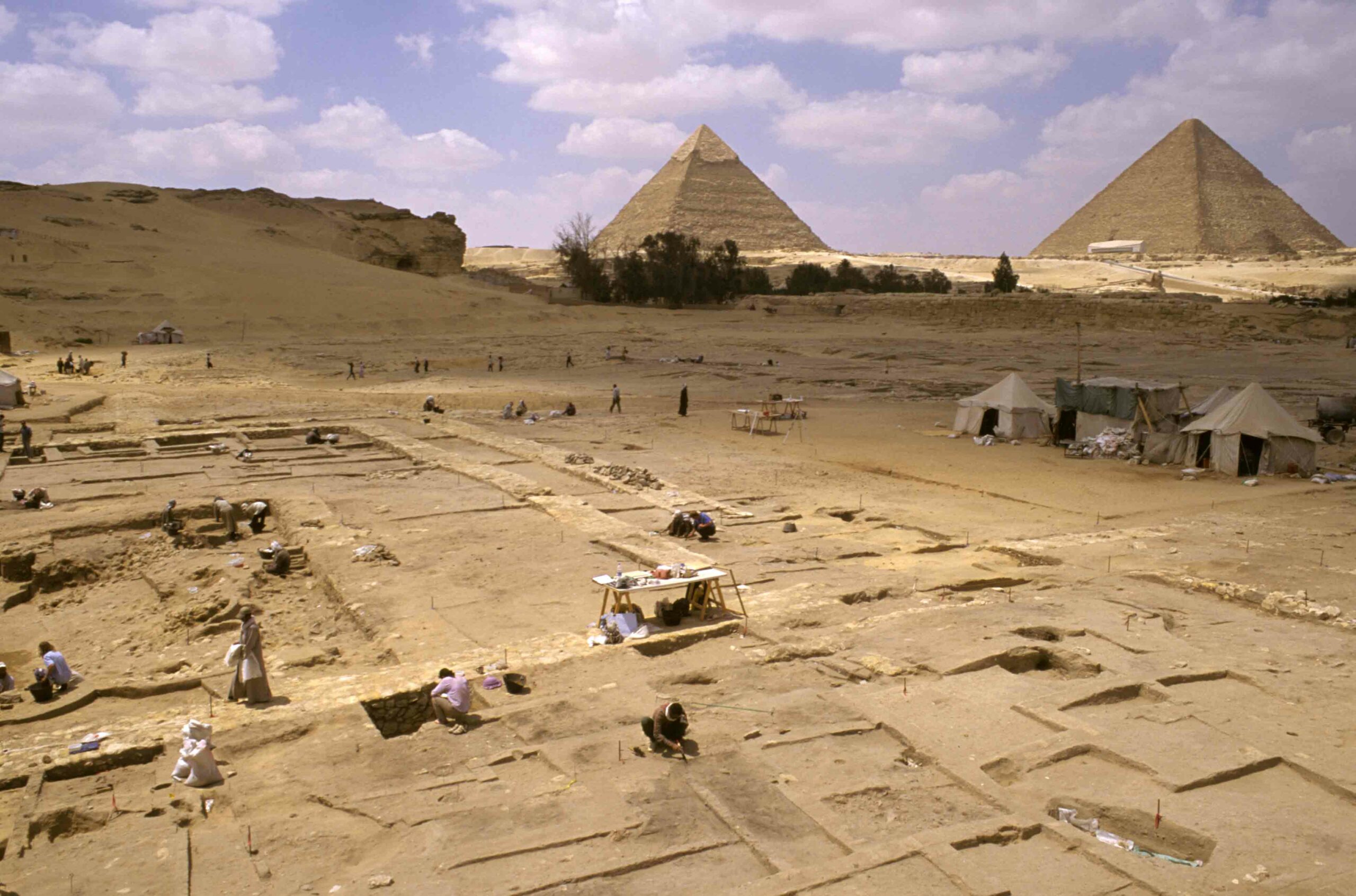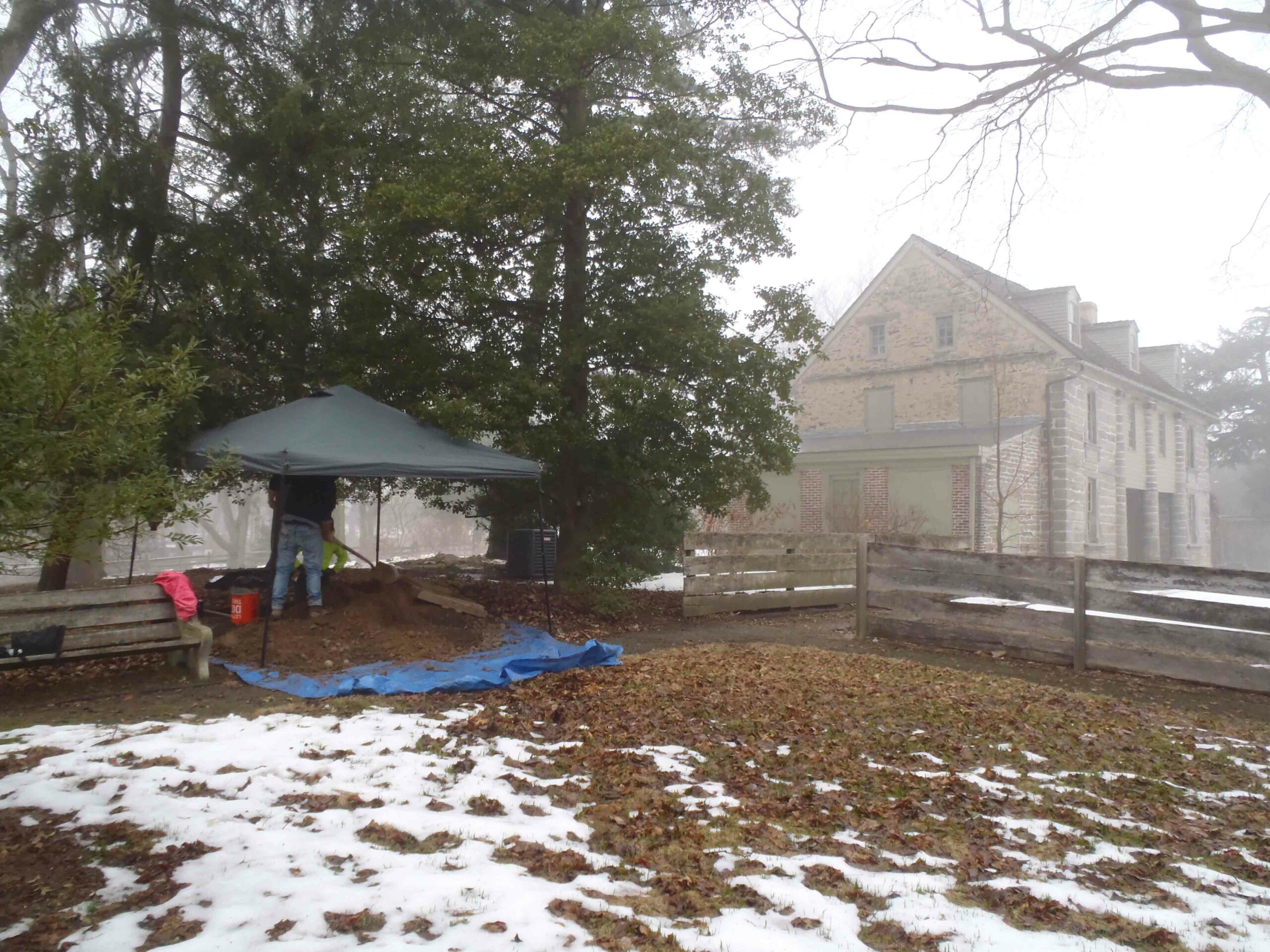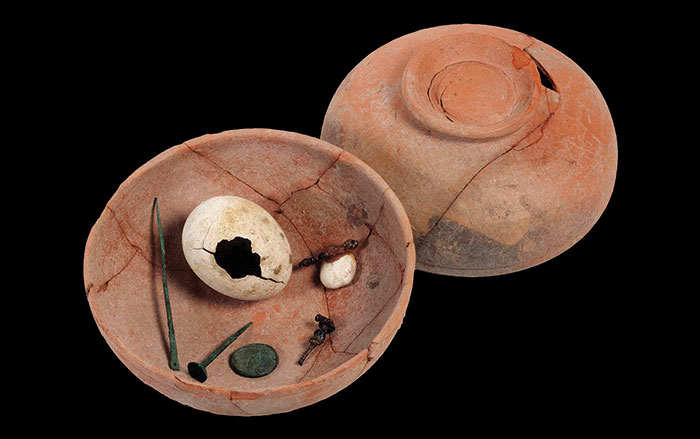
Sometimes great discoveries are made when archaeologists stop digging and take a closer look at what has already been found. This is what happened to Mark Lehner, director of Ancient Egypt Research Associates, as he was looking over maps of Heit el-Ghurab, where he has worked for 25 years. Lehner had thought that Heit el-Ghurab, a 4,500-year-old town next to the pyramids of Giza, was home to the workers who built the pyramids. But now he believes the town was also a wealthy Nile River port.
While examining the distribution of wood and pottery in a part of the town where laborers lived, Lehner recognized that much of it came from the Levant. He surmised that the laborers who built the pyramids were probably also sailors and that Heit el-Ghurab was probably the southern end of an important trade route called the Byblos Run, which brought lumber, olive oil, and other trade goods from territories as far north as modern-day Lebanon. “It’s a whole consilience of different lines of evidence that brought us to this aha moment,” says Lehner.
This rich port also had its own elite class. In the western part of the town, Lehner’s team found leopard teeth, which were worn as ornaments by certain Egyptian priests. The archaeologists also uncovered the bones of calves—veal would have been an especially prized luxury.











